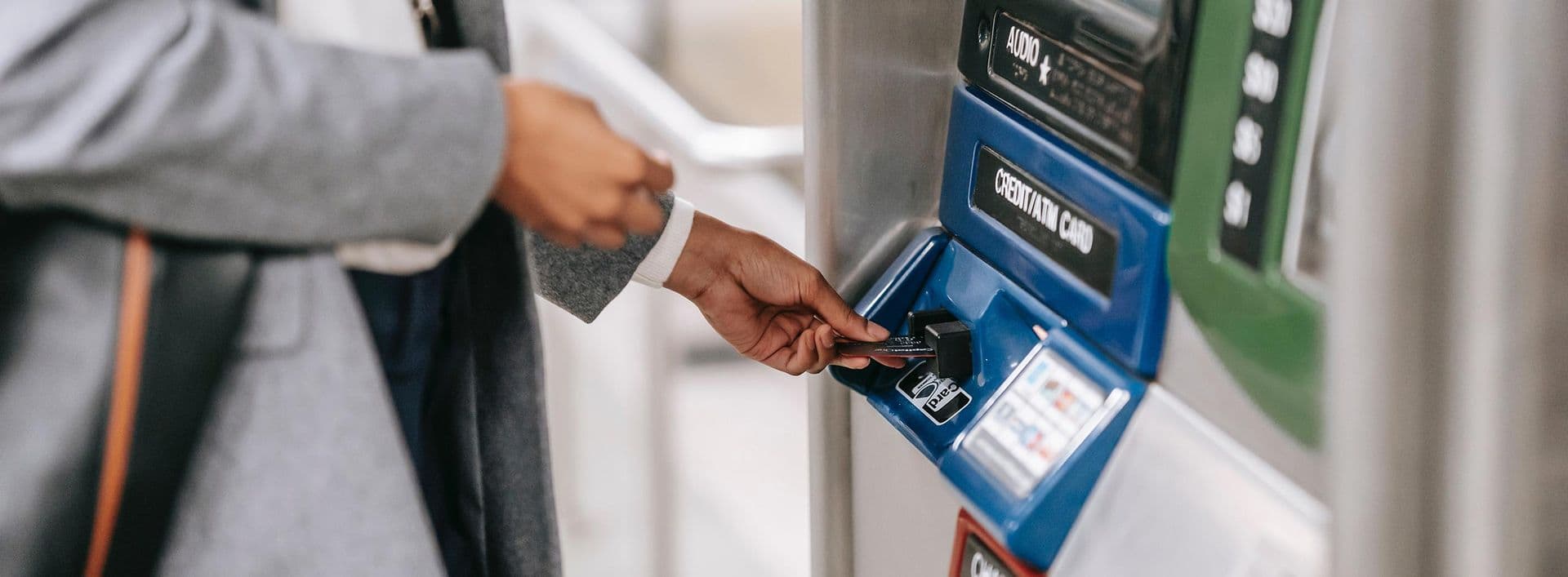How Safe Are UK Banks?
25 May, 2023
While banks are an essential part of the wider economy, a lack of transparency, high-profile bank robberies, and a spate of security breaches have left consumers asking, “Is my money really safe in the bank?”
Most banks take every precaution possible to keep their customers, staff, and their customers’ funds safe, but there are always risks involved in banking.
Is My Money Safe in a UK Bank?
With all of the risks to consider, consumers may wonder whether or not it is safe to use UK banks at all. These concerns are completely understandable. Banking is an essential part of our daily lives. Banking customers entrust their hard-earned money to the institution, hoping that it will be safe and secure.
The good news is that the UK has strict measures in place to protect customers’ savings in the event of a bank failure or financial services crisis. The Financial Services Compensation Scheme (FSCS) is a government-backed initiative that will cover up to £85,000 in losses per person per banking license.

The compensation scheme only applies in instances where the bank is unable to repay the funds lost. If the money stolen can’t be recovered, the FSCS will step in and compensate the affected customers. It’s worth noting that the FSCS applies to UK-regulated banks only, and depositors with offshore banks or other types of financial institutions are not covered.
However, the process of making a claim can be a time-consuming and complex one. It’s essential to have all of the necessary information and documentation in order, including proof of funds, a police report, and other relevant information that may assist you with your claim.
In addition to the FSCS, UK banks are also required to maintain a certain level of capital and liquidity to ensure that they are able to meet the demands of their customers. This means that UK banks are generally well-positioned to weather any potential financial turbulence and provide depositors with peace of mind that their funds are safe.

No deposit protection scheme can guarantee that customer funds are 100% safe. While the chances of a UK bank failing are low, it’s always wise to consider the risks involved and take steps to minimise your exposure to any potential losses.
Physical Safety Measures in UK Banks
In addition to financial safeguards, banks also take precautions that protect the physical safety of bank customers and staff. Violent crime and bank robberies can result in the loss of money and assets, as well as injury or even the loss of life.
These precautions include physical security measures such as reinforced doors and windows, alarms, and surveillance cameras to deter robbers and make it more difficult for them to carry out a successful robbery.
One of the most effective safety measures implemented by banks is the use of safety screens. Safety screens are protective barriers that are placed between bank tellers and customers, creating a secure and protected environment for both parties.
The use of safety screens provides several benefits and a level of physical protection within banks, including:
Physical protection
Safety screens provide a physical barrier between bank tellers and customers, making it more difficult for criminals to physically access the bank’s assets. Most of these safety screens are resistant to physical impact and ballistics and will not completely shatter, even if a would-be bank robber attempts to smash or fire at the barrier.

Deterrent effect
The presence of safety screens sends a message to potential criminals that the bank is taking measures to protect its assets and its customers. This can act as a deterrent and reduce the risk of bank robberies and other violent crimes.
Improved customer and staff comfort
Safety screens can also improve customer comfort by creating a secure environment for transactions. Staff will feel more secure and protected, knowing that their employer values and prioritises their physical safety.
Other Threats Customers Face When Banking
The UK banking sector has faced numerous challenges in the past few years, including years of economic uncertainty, increasing compliance requirements, competition from non-traditional banks and a rapidly evolving technological landscape. They also had to contend with a number of risks and threats from outside parties, including robberies and cyber-attacks.
As a result, there are some safety risks for customers, including:
- Cybersecurity Risks: As banking becomes increasingly digital, the risk of cyber-attacks and data breaches increases. Criminals may try to steal sensitive information, such as login details, or use phishing scams to trick customers into revealing their information willingly.
- Bank Failures: While very rare, it is possible for a bank to fail, which could result in customers losing some or all of their savings.
- Insider Theft: Bank employees with access to customer accounts may commit insider theft, which can be difficult to detect.
- Card Skimming: Criminals may install skimming devices on ATMs that capture card information and PINs when they use the machine, using the stolen information to withdraw money from customers’ accounts.
- Physical Robbery: While this type of crime is rare in the UK, it does still happen, especially in rural areas. In this instance, the criminals physically enter the bank (possibly while armed) and demand money from the staff.
Do Customers Lose Money If a Bank Is Robbed?
In the rare event that a bank is robbed, the losses aren’t attributed to specific customers. The losses are absorbed by the bank and won’t be allocated to individuals. However, it is possible that the robbers can gain access to customer account information which can be used to steal money from those accounts. In that event, losses are attributed to those customers who will need to make a claim to their bank for compensation.
Customers should be aware of the security measures in place at their bank and take the steps necessary to protect their personal information and assets. They should regularly monitor their accounts and report any suspicious activity to the bank.
Fortunately, the risk of a bank robbery has declined over the years. Banks have implemented stronger security measures, such as increased police presence, surveillance cameras, alarms, safety screens, and reinforced doors and windows, which make it more difficult for criminals to carry out a successful bank robbery.
It should also be said that the rise of online and digital banking has led to a decrease in traditional bank robberies. Criminals have shifted their focus to other types of financial crimes, such as cybercrime and card skimming.
However, it is important for banks and customers to remain vigilant and take steps to protect their assets.
Safety Measures Put In Place By UK Banks
While the FSCS is an important safety net, banks have stringent safety measures in place to ensure that their customers’ funds are protected. This includes physical safety measures, such as hiring securing personnel, including security guards and off-duty police, to provide additional protection. Most large banks conduct regular security audits to identify and address potential security risks.

Electronic security measures such as firewalls, antivirus software, and encryption technologies are in place to protect their systems and customer information from cyber-attacks and data breaches.
While the advent of digital banking has meant that banks do not hold or handle physical money as much as it has in previous years, banks still handle large amounts of cash on a daily basis. Cash will always lure criminals to the bank, which is why there are strict cash management procedures in place to control the flow of cash and reduce the amount of money available to robbers. These systems include limiting the amount of cash held in branches and implementing cash recycling systems.
In many instances, banks undergo robust education programmes that teach customers how to recognise and report suspicious activity on their accounts and encourage the public to be vigilant and aware of their surroundings when conducting financial transactions.
What Can You Do to Protect Your Money?
While UK banks are generally considered safe, consumers can take additional steps to ensure they minimise their risks and protect their funds. Here are just a few of the proactive steps you can take to ensure your funds are kept safe in the bank:
Diversify your deposits
Spreading your funds across multiple banks and even multiple geographies can reduce your exposure to potential losses in the event of a bank failure. Any funds over £85,000 lost due to a bank failure that a bank cannot repay will not be covered by government protection schemes; diversifying can provide peace of mind.
Monitor your accounts
Keep a close eye on your bank statements and monitor accounts regularly. This will help you to identify any potentially fraudulent activity on your account due to card skimming or insider theft.
Practice good cyber hygiene
If you use digital banking, always practice good cyber hygiene. Do not reuse passwords, and always log out of banking, social media, and email accounts when using public computers (e.g. in an Internet cafe or library). If a personal mobile device or laptop is lost or stolen, change all passwords to your online accounts immediately and notify your bank.
Consider alternatives
If you are concerned about the safety of your funds, you may want to consider alternatives to traditional banking, such as savings accounts with online banks or investment accounts with financial advisors.

Look for a bank with physical deterrents in place
Visit your branch and do a quick safety check. Are there security screens, cameras, and staff in place? Do they carefully monitor the doors and control entry? These security measures go a long way toward keeping you (and your funds) safe from physical robberies.
Safetell: Making Banks Safer
Safetell has been providing the banking sector with highly adaptable, aesthetically pleasing, and reliable safety screens. Safetell’s screens are not only glazed to provide Manual Attack and complete FB4 Ballistic level protection but are flexible enough to accommodate most counter accessories or aesthetic designs required.
Safetell provides an effective, secure deterrent to would-be robbers and is strong enough to ward off physical attacks without shattering completely. If you would like to know more, get in touch with Safetell.












